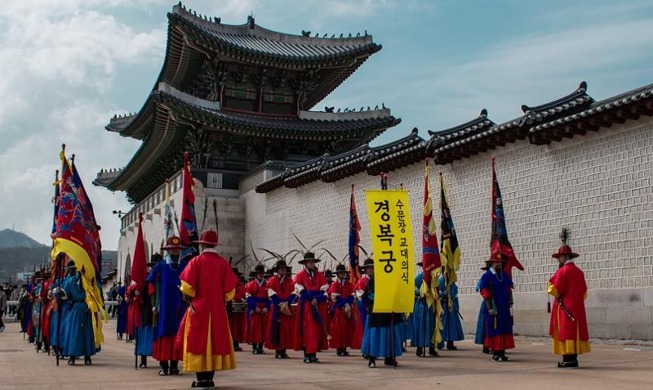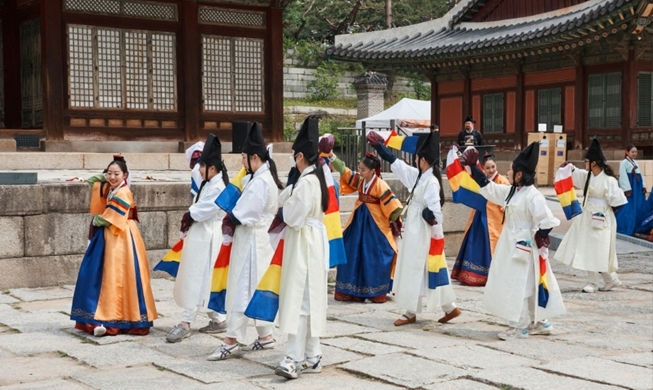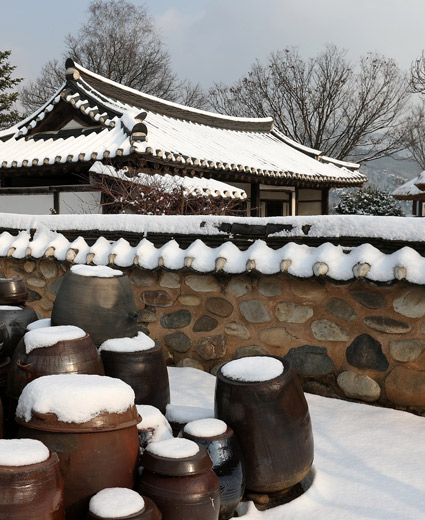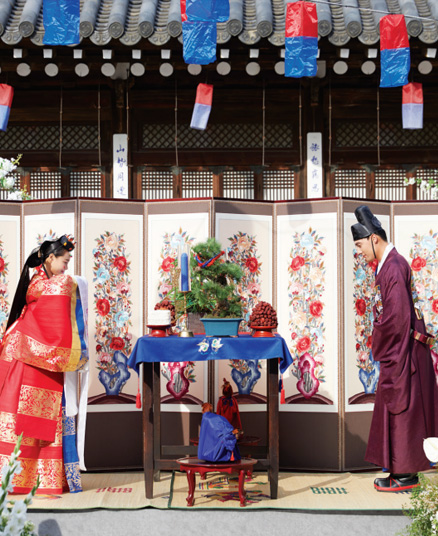-
 Korea.net's 24-hour YouTube channel
Korea.net's 24-hour YouTube channel- NEWS FOCUS
- ABOUT KOREA
- EVENTS
- RESOURCES
- GOVERNMENT
- ABOUT US
Festivals
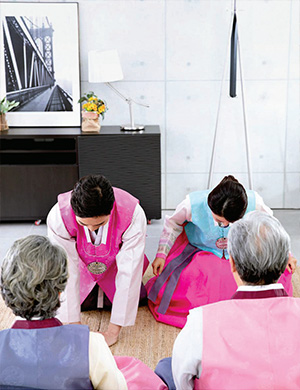
Sebae (New Year’s Bow)
Korea has a long tradition of starting the New Year (by the lunar calendar) with the deep traditional bows made by children to their elders.
Until the mid-20th century, Korea was primarily an agricultural society, whose activities were organized based on the lunar calendar. As such, numerous lunar calendar-based events were celebrated in relation to agriculture.
The Lunar New Year’s Day (Seollal) is one of the festivals that represent Korea. On the Lunar New Year’s Day, families gather to share special foods such as tteokguk and hold rituals called charye (a simplified form of an ancestral rite). Children and sometimes youths wear new clothes (called seolbim) to bow before their elders (called sebae), wishing them a long life. After the bow, the elders are customarily expected to give money gifts (called sebaetdon) to those who bowed.
Another important seasonal festival is Jeongwol Daeboreum (Greater Full Moon), celebrated on the 15th day of the lunar January. It is celebrated by eating ogokbap, a special dish made by steaming a mix of five different grains, served with an assortment of cooked vegetables. People also play various games and rituals for the unity of the local community and a good harvest.
Along with the Lunar New Year’s Day, Chuseok, or hangawi, is one of the biggest and most important holidays in Korea, which is held on the 15th day of lunar August. On Chuseok, all family members gather around to pay respect to ancestors with newly harvested crops and fruits, and eat special rice cakes called songpyeon.
Celebrations
Korean parents celebrate the 100th day anniversary (baegil) and their children’s first birthday (dol) with special celebratory banquets. A dol banquet typically includes a special event called doljabi, where the birthday baby is presented with various objects to choose from; it is said that the object that the baby chooses foretells her future. For example, a book foretells an academic career, and money is associated with wealth.
Koreans hold extravagant wedding ceremonies with all family members, relatives, and friends. In ancient times, on the wedding day, the groom would ride a horse to the bride’s home, where the bride and groom would bow to each other on either side of a specially prepared banquet table. The groom would wear samogwandae, which refers to the uniform of government officials, and the bride would wear luxurious clothes such as hwarot (usually worn for important rituals at the royal court) and wonsam (female ceremonial topcoat), as well as a flower headdress or jokduri (a type of coronet) on the head.
Koreans traditionally celebrated their 61st birthday, called hwangap, by gathering all descendants and relatives for a large banquet (hwangap janchi). However, with the average life span reaching 80, hwangap banquets have been largely simplified, focusing more on chilsun (70th birthday) instead.
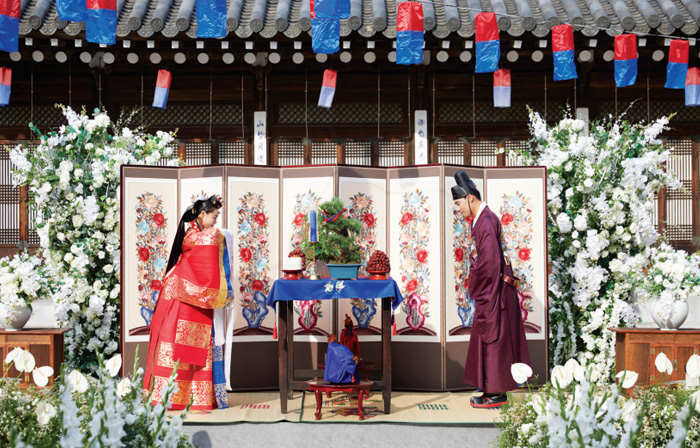
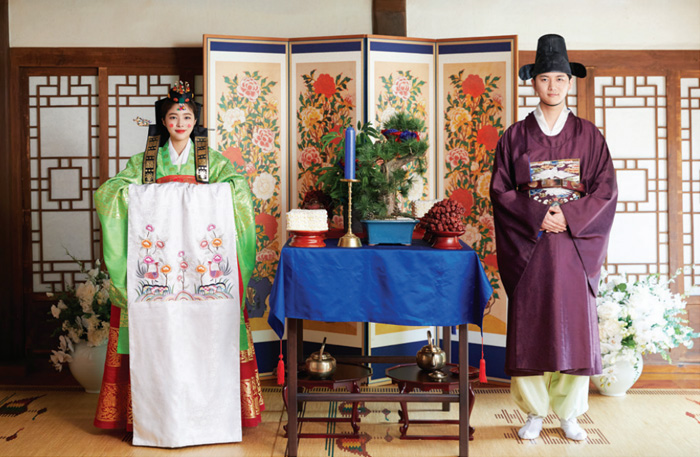
Traditional Wedding
The traditional Korean wedding ceremony largely consists of three stages: Jeonallye, in which the groom visits the bride’s family with a wooden goose; Gyobaerye, in which the bride and groom exchange ceremonious bows; and Hapgeullye, where the marrying couple shares a cup of wine. The photo shows a bride and groom exchanging ceremonious bows during the Gyobaerye stage of their wedding ceremony.
National Holidays
In Korea, there are five national holidays designated by the government. The March 1st Independence Movement Day commemorates the non-violent independence movement that swept the Peninsula on March 1, 1919, to resist the Japanese occupation of Korea. Constitution Day, or Jeheonjeol, is observed on July 17, to celebrate the promulgation of the Korean Constitution on the same day in 1948. National Liberation Day (Gwangbokjeol), celebrated on August 15, commemorates Korea’s liberation from Japanese colonial rule on August 15, 1945. National Foundation Day (Gaecheonjeol), celebrated on October 3, marks the foundation of Gojoseon on October 3, 2333 B.C.E. Gojoseon was the first state ever to be founded by the Koreans. Finally, Hangeul Proclamation Day (Hangeul Day), celebrated on October 9, commemorates the invention and proclamation of the Korean writing system on the same day in 1446.
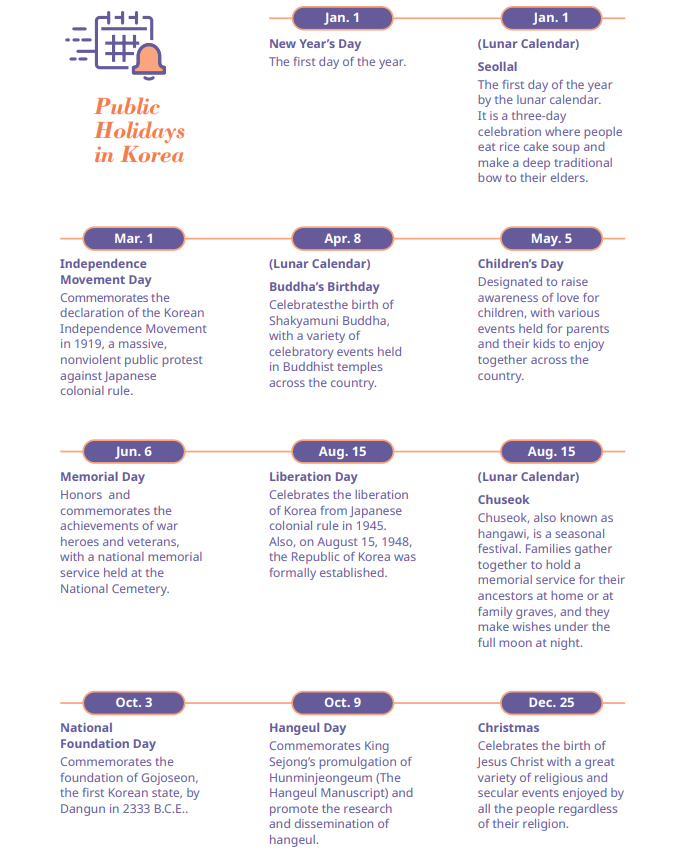
Religion
Korea is a country where different religions—Protestantism, Buddhism, Confucianism, Islam, and shamanism—coexist peacefully. Around 40% of all Koreans have a religion. Protestants comprise the largest percentage of religious Koreans, followed by Buddhists and Catholics.
Protestantism was brought to Korea in the nineteenth century and spread rapidly via schools and hospitals. Even today, there are quite a number of Christian schools, universities, and hospitals across Korea.
The adoption of Catholicism slightly predates Protestantism. In the early years since its adoption, Catholicism was regarded as an academic discipline categorized under Seohak, or Western ideas. However, those who studied the new ideas gradually came to accept it as a religion. Many of these believers were martyred because of their beliefs, making Korea a country with the fourth-largest number of Catholic saints. In addition, Korea has many schools, universities, and hospitals based on Catholic belief.
Buddhism arrived in the Peninsula during the ancient Three Kingdom Period, helping these kingdoms overcome the invasion from other countries. The religion also had a great effect on the overall aspects of people’s lives, be it architecture, handicraft, and culture and art.
Confucianism is closer to a set of ethical codes of conduct focused on loyalty, filial piety, and ancestral worship than a religion. It served as the national ideology of the Joseon dynasty (1392–1910), and still exerts a significant impact on Korean culture, including respect for elders and emphasis on filial piety
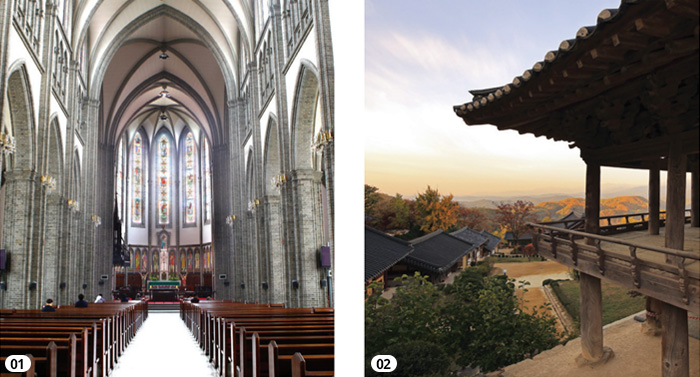
01. Interior of Myeongdong Cathedral in Seoul
02. Buseoksa Temple in Yeongju, Gyeongsangbuk-do (Listed as UNESCO World Heritage in 2018)




